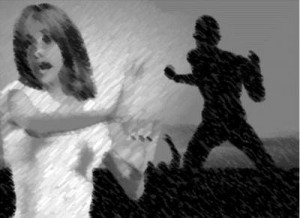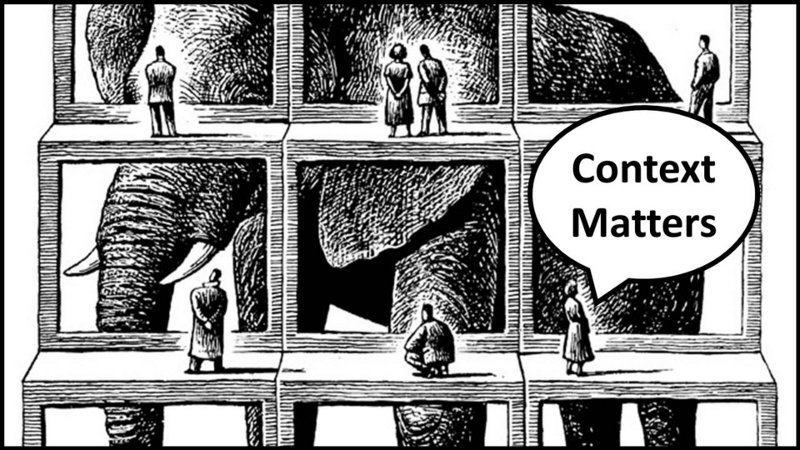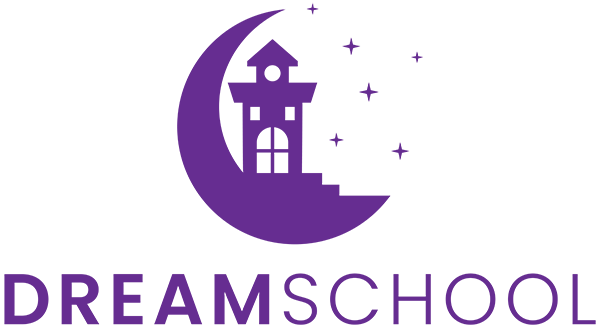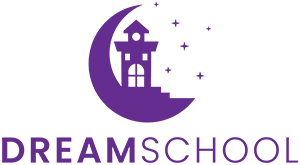What we call a symbol is a term, a name, or even a picture that may be familiar in daily life, yet that possesses specific connotations in addition to its conventional and obvious meaning.
Dr. Carl Jung
Interpretation and meaning of dream symbols
Everything in dreams is symbolism and the stories are heavily populated by symbols. This is lesson #1 about symbols: they’re everywhere in your dreams, and everything in your dreams must be understood as symbolic, except on rare occasions when they’re literal.
It might seem pointless to differentiate a dream symbol from symbolism, but there is a difference, and it’s important:
- A symbol is a thing that represents an idea or set of ideas.
- Think of a symbol as a shorthand way of expressing an idea.
- Symbolism is the use of symbols to convey more complex ideas.
Dreams string together symbols to create symbolism and tell a story. It’s a language. Language is understood a word at a time, and the words are understood in the larger framework of sentences. Symbols are the words; symbolism is the sentences.
Or think of the difference between a symbol and symbolism as like the difference between a snapshot and a video recording. A symbol is like a snapshot, a moment captured in time. No action and limited context. It might be obvious what’s really happening in a snapshot, but still you must make some assumptions. Symbolism is like a video recording of the same scene. It shows the action and context and leaves less room for guessing. If you know how to speak dream language, the meaning is right before your eyes. Action and context give definition to your dream symbols. A dream symbol is like a metaphor, and in the dream it is set in motion.
“A picture says a thousand words,” right? Well, whoever coined that phrase might as well have been describing dream symbols. They’re loaded with information that can be communicated all in a glance: thoughts, emotions, feelings, ideas, opinions, perceptions, concepts, beliefs, values, principles, and so forth. In one image they sum up the external and internal dynamics of a situation. For example:

For a person who feels like they are hunted by something or someone, an image such as the one above can capture the external dynamics (a threat; the source of the threat; how it materializes; the situation itself) and internal ones (fear, avoidance, mystery, emotions, feelings, perceptions, beliefs, patterns, personal shadow).
And here’s the rub. A symbol can have multiple meanings simultaneously. For example, the flood that overtakes you in a dream could symbolize a situation that overwhelms you, plus the emotions that pour out of you like water. The external and internal dynamics are summed up in one image. Used in a dream, it’s a symbol that can be powerfully expressive and layered with meaning.
Symbols say what isn’t said out loud, what isn’t obvious or needs to be expressed subtly, such as when a dream uses a symbol to represent a person you are angry with and the sight of the person in the dream would send you off course. Symbols fill out the story and tie it together. They’re an important part of dream interpretation, but they receive too much emphasis in pop culture. More important to understanding dreams is symbolism, and this site offers an extension lesson on that subject.
Every symbol has various possibilities for meaning. It’s up to you to apply dream interpretation techniques to narrow down the possibilities and discover what the symbols in your dreams mean specifically to you. You learn those in Step 2.
How dreams use symbols
Dreams choose symbols carefully and deliberately to capture dynamics. Dreams are not likely to symbolize an argument as a war, for example, unless the argument is part of a protracted struggle or heated battle. A nuclear war is stronger symbolism. It’s not just any argument, it’s the mother of all arguments. It’s Armageddon!
Or maybe it just feels like Armageddon. Your dreams use symbols subjectively, not objectively. The person you argue with, who doesn’t feel as strongly as you, might dream about the same situation as firecrackers or balloons popping.
Your dreaming mind starts with a conflict you’re in, for example, then picks the best symbolism for telling the story. And the strength of the symbolism depends on the strength of the conflict, the dynamics of the situation, and how you feel about it. A small conflict can be symbolized as a wind howling outside your home, but a big conflict is a hurricane that rips the roof off!
Ripping the roof off can be appropriate symbolism for losing your head—your head representing the roof, and the hurricane representing a turbulent conflict or powerful force. Or it’s a conflict that threatens your security, the “roof over your head.” Specific details in the dream’s story match the situation. Dreams use symbols that fit best and get the point across. Plus, it’s good storytelling.
The picture painted by the dream is a physical representation of a personal situation. The physical representation is the roof ripping off, and the personal situation is the threat or powerful force.
Specific or general
When a conflict is with a specific person or thing, a good rule of thumb is the dream is more likely to feature a specific opponent. An impersonal battle is more likely to use the battle theme without showing specific opponents. The battle is with a pile of work and is shown as enemy troops overrunning a defensive position. The troops are not emphasized and few details are given about them. They are all lumped together. On the other hand, picture a battle with a dark side of your personality. That’s personal. In the dream, the enemy is a powerful dark knight determined to lop off your head with a huge sword. The dark knight is a specific opponent. The battle is personal and feels that way during the dream and afterwards when you recall it.
Apply those ideas to dreams about disaster. It’s one thing for a dream to show a storm beating down, and another thing to place you in the path of tornado or hurricane. Each one says “disaster” in different ways.
Think like a storyteller
Dreams carefully choose every symbol and detail, so question it. See the reasoning behind them. Reverse engineer the story.
Take modes of transportation, for example. Oftentimes, they are used to symbolize the movement of your life, the progress or lack of it and ways you go about your business. Your life “moves.” You “go places.” You have destinations. Marriage is a destination of sorts. Retirement is a destination. Mastering a new skill is a destination. Now think like a storyteller and consider the options you have to show movement in your life: car, train, boat, plane, bus, bicycle, tricycle, motorcycle, hot air balloon, rocket, spaceship. Choose the mode of transportation that best fits the situation:
- Cars tend to symbolize daily life and present circumstances. The discussion of symbolism goes into depth about cars in dreams.
- Trains tend to be associated with ideas such as “on track,” “no stopping it,” and “interrelated.”
- Boats tend to symbolize long-term goals and destinations, the journeys of life, and the slow movement of the psyche.
- Planes, on the other hand, get you to destinations quickly. They’re used more as symbols of getting to the more distant and important destinations in life, especially in your ambitions and desires, and the places in life you want to reach quickly.
- Buses are slow group transportation and tend to symbolize ideas such as being on someone else’s schedule, where you are headed in a group situation, and how you fit into a group such as colleagues or church.
- Motorcycles are designed for single-person travel, and in dreams they can connect symbolically with ideas such as “go it alone,” and “freedom.”
- Rocket… yeah, you get the idea of getting somewhere quickly and barely being in control of the direction.
Prominence
A symbol’s prominence in the dream-story is a clue. For example, it’s one thing to dream about seeing a knife on a counter, and another thing to dream about using your father’s favorite knife to cut free someone trapped in a sinking car. In that case, you use the knife instead of just seeing it, and it’s not any ol’ knife, it’s your father’s. It has greater importance and prominence, and so does the symbolism. Using your father’s knife can symbolize using something he taught you, or following his example. It’s a stronger situation requiring stronger symbolism.
A nondescript knife on a counter can symbolize a counter-argument. The knife is neither prominent nor specific.
See the difference?
Symbols by themselves generally don’t say much. Or they potentially say too much and the possibilities are too broad, and the meaning is hard to pin down. But they have rich meaning and significance when put together with other details and shown in the context of the dream-story.
Modifiers
Symbols are modified by details such as color, movement, conditions, position, shape, speed, and size. These modifiers are the adjectives and adverbs of dream language. They modify or add to the meaning of the symbol. The chapter on symbolism addresses this subject with more depth.
Symbols in context

The meaning of a symbol is defined by other details or associations and how they’re used to tell the story. Rarely is a symbol interpreted by itself. It’s understood in the context of the dream story and the dreamer’s life.
Say that you dream about a giant eye just floating like an asteroid in outer space. Nothing else happens in the dream. It would appear that the dream isn’t giving any clues to the meaning of the symbol and it has to be interpreted by itself. However, you can ask yourself how you feel, what you notice, and what you associate with the eye. Do you feel like you are being observed or watched, or is there something you should be seeing or noticing? Do you notice a speck in the eye? Is it clouded over like a cataract? Do you associate the color or shape of the eye with someone you know or something you’ve seen?
If you feel like you are being watched by a giant eye, maybe you really are being watched. Maybe spyware is on your computer, or a neighbor is peaking in your windows, or someone is keeping an eye on you. If you feel like the eye is related to seeing something, maybe you should be more observant of what’s going on presently in your life, or take a hard look at yourself. Or maybe the eye is related to insight. In mystical and esoteric traditions, the Third Eye is a symbol of seeing through illusion, revealing truth, gaining insight, and acquiring knowledge.
If you notice a speck in the eye, maybe it’s related to the scripture, “Why do you look at the speck that is in your brother’s eye, but do not notice the log that is in your own eye?” Maybe you notice other people’s flaws but not your own. If the eye is clouded over, it could be an early warning about a cataract developing, or perhaps your thinking is cloudy and it’s preventing you from seeing something that otherwise would be obvious. If the eye reminds you of someone you know, the dream could somehow connect with that person. Or if it reminds you of one of the eyes of the Mona Lisa, maybe it’s a symbol for having an eye for art, or a reminder that your grandparents had a replica picture of the Mona Lisa in their home. In which case, the dream connects with them or their home and what it means to you.
Personal and universal symbols
Everyone has a personal dictionary of symbols and symbolism accrued throughout a lifetime, and each culture has its own meanings and associations with some symbols. Some symbols are universally known. Others are specific to certain cultures, times, places, people, and groups. The specific meaning of some symbols might only be known to the kids who grew up in your neighborhood, or among people who play a particular game or sport or possess a particular skill. For example, computer programmers have specialized knowledge and language that their dreams can use to create symbols and symbolism.
To an Eskimo, a frozen lake is something common to their environment and might symbolize fishing for food or a change of seasons. To someone who lives in a place where frozen lakes are less common — say, Saudi Arabia — that imagery in a dream is more likely to symbolize depression, frozen emotion, or a slippery situation. To members of some Native American tribes, a snake in a dream is almost always interpreted in terms of God, Nature, and Spirit. Snakes are positive dream images. But to other people a snake is the ultimate symbol of fear or evil.
The way the symbol is used depends a lot on one’s culture, background, and personal feelings. However, consider that everyone knows that snakes can be dangerous, whether they feel that way personally or not, and therefore to anyone snakes can symbolize danger. Of course, the degree of danger can vary, and to a snake handler, well, perhaps a snake symbolizes a manageable danger, if it’s used that way at all in their dreams.
Point is, the most important consideration is what a symbol means to you personally.
Archetypal symbols
This subject can veer off track quickly because there’s a lot of confusion about it. Dr. Carl Jung theorized about the existence of timeless archetypes after he observed obscure alchemical symbols in the dreams of his patients who had no way of knowing about those symbols. He theorized that some symbols are ingrained in the minds of all people at all times and in all cultures. And he’s correct. Archetypal symbols appear in dreams when deeper layers of the psyche are accessed and the most important existential questions are addressed. Until I make available online my writings about this subject, I suggest that you explore the subject here:
Carl Jung’s archetypes, briefly explained.
Personalize your dream symbols
With time and practice you will build your own dictionary of dream symbols, and as you do, your dreams will become easier to decipher because you will recognize certain landmarks right away. It’s like if you see the Eiffel Tower, you immediately know it is in Paris.
Let’s say that you dream about the Eiffel Tower and think it might represent the desire to travel and see the world. To confirm the hunch, look for other travel-related details like hotels, airports, luggage, cameras, passports, money and maps. Search your feelings, and ask yourself if thoughts related to travel have crossed your mind recently. Perhaps in the dream a friend is with you who has gone on many trips overseas and returned with fantastic stories that sparked your imagination. A supporting detail like that backs the hypothesis that the dream is related to the desire to travel and have your own adventures.
More resources for understanding dream symbols

Deep your knowledge of dream symbols
What you must know to interpret them
$19
Master the interpretation of dream symbolism
Bundle of two courses: Dream Symbols and Advanced Dream Interpretation
$59
Next lesson:
This lesson completes our lesson about story elements (settings, characters, symbols). Next, we explore narrative components, beginning with dream actions.
Use the links to below to explore dream symbolism and symbols
- Interpret snake dreams
- Interpret alien and UFO dreams
- Interpret death dreams
